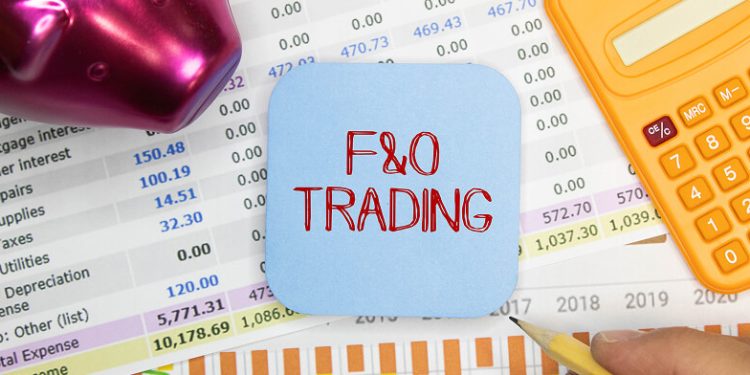Investing comes in many forms, and one popular choice among traders is Futures and Options (F&O) trading. However, calculating F&O turnover can be complex, especially for beginners. Many traders struggle to understand how turnover is calculated and its tax implications. This article will break down the process in a simple and easy-to-understand manner, helping you stay informed and compliant with tax regulations.
What is F&O Turnover?
F&O turnover is not the total value of your trades but the total of your profits and losses. It helps determine if you need a tax audit and how much you must pay. Unlike stock trading, where turnover is calculated based on the buying and selling value, in F&O trading, turnover is calculated based on the absolute profit and loss from your transactions.
Step into the world of Futures & Options — Open your Demat account
How to Calculate F&O Turnover?
The calculation of F&O turnover is different for futures and options. Let’s understand it step by step.
-
Turnover Calculation for Futures Trading
For futures trading, turnover is calculated by adding:
- The total of all profits made
- The total of all losses made
Example:
Imagine you made the following trades in futures:
| Particular | Buy Price
(₹) |
Sell Price
(₹) |
Profit/Loss(P/L)
(₹) |
Turnover
(₹) |
| Nifty50 Futures | 18,000 | 18,500 | +500 | 500 |
| Reliance Futures | 2,500 | 2000 | -5000 | 5000 |
In this case, the total turnover is:
500 (profit) + 5000 (loss) = 5,500
-
Turnover Calculation for Options Trading
For options trading, turnover is calculated by adding:
- The total of all profits made
- The total of all losses made
- The premium received when you sell an option
Example:
Imagine you made the following trades in options:
| Particular | Buy Price (₹) | Sell Price
(₹) |
Profit/Loss
(P/L) (₹) |
TurnOver
(₹) |
| Nifty50 18000 CE | 1700 | 2700 | +1000 | 1000 |
| Nifty50 18500 PE | 5000 | 9000 | -4000 | 4000 |
In this case, the total turnover is:
1000 (profit) + 4000 (loss) = 5,000
-
Final Turnover Calculation
Now, let’s add the futures and options turnover together:
- Futures Turnover = 5,500
- Options Turnover = 5,000
- Total Turnover = 5,500 + 5,000 = 10,500
So, your total F&O turnover is ₹10,500.
Recommended Read: Profit & Loss Calculation in F&O Trading
Why is F&O Turnover Important?
F&O turnover helps in:
- Tax Calculation: It decides whether you need to pay tax and how much.
- Tax Audit Requirement: You may need a tax audit if your turnover is above a certain limit.
- Claiming Losses: You can report F&O losses and adjust them against future profits.
Tax Audit and F&O Turnover
A tax audit is required in some cases. Here’s when you need one:
- If your turnover is more than ₹10 Crore: A tax audit is mandatory.
- If your turnover is between ₹2 Crore and ₹10 Crore: A tax audit is needed only if you don’t maintain 6% or more profit under the presumptive taxation scheme.
- If your turnover is below ₹2 Crore: A tax audit is required only if your total profit is less than 6% of turnover and your total income exceeds ₹2.5 lakh.
Tax on F&O Trading
F&O trading is treated as business income, not capital gains. This means:
- Profits are added to your total income and taxed per your tax slab.
- Losses can be set off against other income (except salary) and carried forward for 8 years.
If you don’t opt for the presumptive taxation scheme under Section 44AD, you must pay advance tax in four installments.
What Expenses Can You Deduct?
Since F&O trading is considered a business, you can deduct expenses such as:
- Brokerage charges
- Internet and software costs
- Subscription fees for stock market platforms
- Consultancy fees for financial advisors
- Office expenses (if applicable)
These deductions reduce your taxable income and lower your tax liability.
How to Report F&O Turnover in a Tax Return
When filing your income tax return (ITR), you need to report F&O turnover properly. Here’s what you’ll need:
- Form 16 & Form 26AS (for income details)
- Trading account statements
- Turnover report from your broker
- Profit and loss statement
- Bank statements (if required)
You must file ITR-3, which is meant for individuals earning business income.
Recommended Read: How to Trade in F&O with Small Funds
Conclusion
Calculating F&O turnover is not difficult when you understand the basics. Just remember:
- Add all profits and losses to get the turnover.
- Tax audits are required in some cases.
- F&O income is taxed as business income and losses can be carried forward.
Keep proper records and file ITR-3 for tax purposes.
FAQs:
-
Is turnover the same as total trade value?
No. F&O turnover is the total of absolute profits and losses, not the total value of trades.
-
If I make a loss, do I still need to report turnover?
Yes, turnover must be reported even if you make a loss.
-
Do I need a tax audit if my turnover is low?
Not always. A tax audit is required only if your profit is below 6% of turnover and your total income is above ₹2.5 lakh.
-
Can I carry forward my F&O losses?
Yes. Losses can be carried forward for 8 years and adjusted against future business income.
-
Do I have to pay GST on F&O trading?
No, F&O trading does not attract GST.






